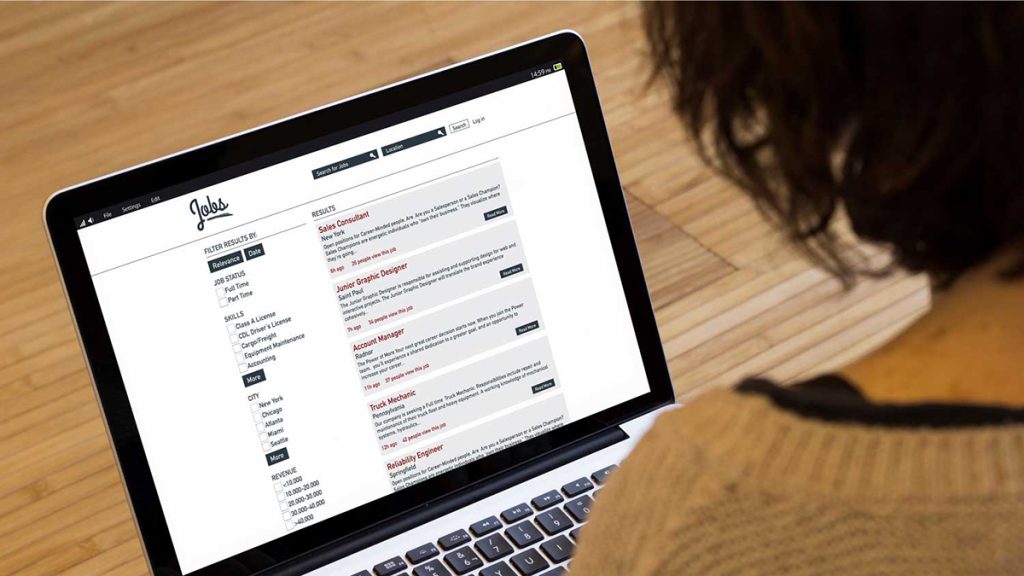
How to get noticed by a job recruiter and beat the automated hiring systems
A conversation with Eric Rubin, a Senior Recruiter for News and Sports at Warner Brothers
Whether it’s within the industry or as far from it as possible, the job search process can be equally demoralizing, especially for applicants who don’t already have an “in” or lack the name brand recognition that might let them jump to the front of the line.
To make matters worse, the majority of applicant tracking systems used by companies to manage job postings and incoming responses do job seekers no favors.
Human resources software like Workday, Taleo, and iCIMS are so clunky and time-consuming that, according to one survey, 92% of candidates abandon their application before hitting submit. And for those that do fill in all the boxes and upload all the documents, there’s no guarantee that all that effort will result in a response, let alone an interview.
According to Eric Rubin, a Senior Recruiter for News and Sports at Warner Brothers who currently focuses on recruiting digital journalists for CNN.com, a mid-level position at a company like CNN could get anywhere between 100 to 300 applicants while an entry level role could garner up to 500 to 700.
So what can you do to get noticed? I spoke with Rubin to learn how to make your application shine in and out of the media industry.
1. Be specific
“The issue I see most frequently is that people aren’t providing the most relevant information,” says Rubin. He explains that if he’s hiring for a video producer job on the business beat that’ll require editing 3-5 minute long videos multiple times per week using Adobe Premiere, he’s looking for candidates whose resumes are a direct match.
“I really think the job description should be your guide for thinking about your own experience and understanding what to include,” he continues, noting that if a resume only says that you’re a producer or know how to edit or that your videos receive 4 million views on YouTube, it doesn’t communicate enough for a recruiter to know whether you’re the ideal candidate.
2. Tailor the contents of your resume
Taking the time to tailor your resume to feature your most relevant experience shows recruiters that you are legitimately interested in the position and makes it easy for anyone reviewing your application to see why you should be on their shortlist.
If you’re spotlighting clips, be discerning about which articles you highlight; if you’re applying for a business reporter position with a news outlet that publishes interview-heavy, longform essays, then include a few examples—Rubin suggests three to five— of similarly constructed pieces on topics you’d likely cover on the job. And if you have any information about their impact, whether it be impressive engagement metrics like views or shares, or something drastic like new legislation or the dawn of a global movement, be sure to tack on that context.
If you’re hoping to transition to a new beat—say from business to politics—choose pieces that prove your current knowledge base and process can adapt to another desk. An article on corruption for example, is just as at home in the business section as it is in the politics one; a story about an athlete being traded to another team isn’t too dissimilar from a piece about a powerful CEO getting the boot.
3. Format your resume
My general rule of thumb is to keep the formatting as boring as possible. One column, no colors, no shapes or images, no fancy fonts. Unless you’re applying for a graphic design position, don’t be artsy. There’s no need to include an image of yourself.
The more basic the layout, the easier it’ll be for applicant tracking systems to auto populate the appropriate fields. Otherwise, your name will end up as your address, your phone number will be your career experience, and the dates of your last job will be your education.
And remember to proofread your resume! Even seemingly minute errors like switching from an en-dash to an em-dash when listing your years on a job can make a stickler pause and question whether you have the attention to detail required for a position.
If you don’t know how to build your resume, check websites like Enhancv, Indeed.com, Zety, Canva, LiveCareer, and even the Microsoft Word software for free, customizable templates.
Be prepared to make modifications when inputting your work history online even if these sites claim the resumes are application tracking system-friendly. The best designs cannot appease an antiquated career portal.
3.5. Include your full resume in the career portal
While Rubin says he’ll look at everyone’s uploaded resume to avoid disqualifying a candidate who may not have included their full job history in the career portal, other recruiters aren’t always so generous with their time.
When I spoke with Alex Fenstermacher, a lead recruiter in the tech industry, he said that he’ll look at the inputted resume first and only if that’s intriguing will he look at any uploaded documents.
Despite their preferences and the common assumption that recruiters are filtering out candidates by keywords alone, both Rubin and Fenstermacher say that they’ll look at every resume that comes in.
4. Show you’re worth their time
According to the 2022 Training Industry Report from Training Magazine, last year, it cost companies an average of $1,207 and 62 hours to train a new hire. So no matter how qualified you may be, if you’re not selling yourself as a good long term investment, you’re probably not going to get the role.
“We want someone who really wants to work here,” says Rubin, rather than someone who’s likely to jump ship as soon as something better comes along. One way to demonstrate that is to highlight the jobs in your work history, extracurriculars, or prior school work that paint a portrait of someone aiming to move up in the ranks. If your trajectory obviously aligns with the company’s mission, then the more likely you’ll be seen as someone to pursue.
Rubin notes that you can even mention hobbies that emphasize your commitment to progressing within a particular industry. Under a Personal Experience heading, you can include blogs you’ve developed, social media accounts you’ve managed, volunteer work you’ve participated in, or other non-professional activities that have allowed you to hone relevant skills or expand your expertise.
If your career history is a bit all over the place or maybe you took an extended break from the workforce, you can write a few sentences at the top of your resume to explain your objective and how your prior experience is applicable.
6. Have a portfolio
There’s no better way to prove you’re capable than to provide concrete examples of your work. Even something you made on your own time rather than something that was professionally commissioned can serve as evidence that you know what you’re doing. Use your portfolio as an opportunity to showcase your best work, not all your work—we’ve all written content we’d rather no one find—so choose the pieces you’re most proud of and place them front and center.
Squarespace, Wix, and WordPress all have templates that are visually pleasing and portfolio-appropriate. If the idea of creating your own website sends your spiraling, you can use Contently or Muckrack to make a profile instead. However, with sites that aggregate your clips for you, double check that everything included is actually yours as they often make mistakes, especially if you have a common name.
Need inspiration? Most journalists include their portfolio link on their Twitter profiles so search for your favorite writers to see what they’ve done. You can even look at mine.

Comments